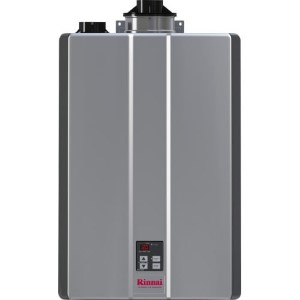- Home
- Tankless water heaters
- Tankless Water Heaters Parts
How to Order Tankless Water Heater Parts
Find out about the main tankless water heater parts, their role in water heating, how the quality is related to the heater's performance, efficiency, and durability. The majority of the features here are present in all water heaters found in North America, such as Noritz, Rinnai, Paloma, Takagi, AO Smith, Bosch, and many others.
 Takagi tankless water heater
Takagi tankless water heaterWhat makes the tankless water heaters unique is that all the parts are replaceable, while tank-type heaters are not.
These are the main components:
- Detachable front cover
- Control panel with the display and commands for programming
- Modulating gas control valve
- Combustion chamber with the cover
- Heat exchanger (one in non-condensing, two in condensing models)
- Electric electrodes
- Flame rod
- Outlet and inlet temperature sensors
- Water valve
- Fan
- Venting system
- Flow sensor
- Exhaust sensor
- Remote controller
The front panel covers the inner tankless water heater parts and, most of the time, is painted in white. Noritz and Rinnai have some models with the front panel made of stainless steel, which gives them a metallic silver appearance (mainly for commercial models).
A control panel with an electronic board is the brain of the heater; it collects signals, adjusts parameters, and keeps every operation in order and under control.
A gas control valve is what provides natural or propane gas to the heat exchanger. Once it gets the signal from the electronic board, it supplies the heat exchanger with gas where it gets lit. The majority of gas valves today are modulating, increase or decrease the gas flow based on the water flow, hot water demand, or set temperature.
Indoor models utilize the sealed combustion gas chamber where the heat exchanger and ignition electrodes are located, and it is the place where the gas is burning. From a combustion chamber, products of combustion are transferred via the exhaust pipes outside.
Most of the conventional tankless water heaters are equipped with one (primary) heat exchanger made of copper. At the same time, condensing units have two, from which the secondary heat exchanger is made of stainless steel.
Ignition electrodes generate sparks and ignite the fire while the ionization or flame rod informs the control board that the flame is still present (if not, the electronic circuit board turns the unit off).
A venting and exhaust system is used to bring the fresh combustion air in and remove the products of combustion out. These are found as the concentric and twin-pipe system and can be run horizontally through the outside wall or vertically through the roof. You will find intake air and exhaust ducts at the top of the water heater on which the pipes will be installed.
A water flow sensor protects the unit from the low water flow.
An outlet temperature and exhaust sensors ensure that the temperature of hot water is not over the limit.
Some tankless water heaters are equipped with a remote controller; some are not. It is an elegant and convenient feature to have. It controls and monitors the temperature, allows easy troubleshooting by showing the error codes, informs about the history, water flow rate...
LCD or LED display does the same thing as a remote control but is located on the unit.
How to order tankless water heater parts
As said above, every component in tankless water heaters can be replaced. This is what you should know when ordering any of these elements:
- Model and serial number (check the rating plate)
- Gas type
- Part name (heat exchanger, ionization electrode...)
- Home
- Tankless water heaters
- Tankless Water Heaters Parts



